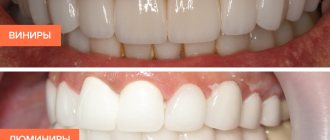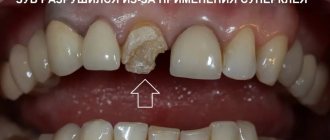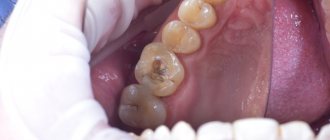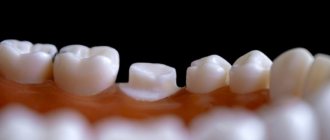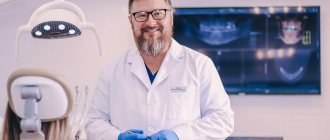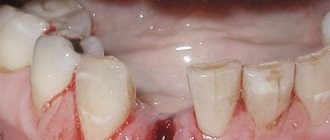Tooth root removal is one of the most labor-intensive and complex procedures in modern dental practice. The indication for its implementation is the preservation of the root part of the tooth in the gum, subject to complete destruction of the crown (for example, in severe forms of caries, as a result of injury or illiterate dental treatment). Untimely operations to extract such units is a factor contributing to the development of a whole range of diseases (periodontitis, periostitis, etc.). That is why “problem” roots must be removed as soon as possible.
When is tooth root removal required?
The decision to remove a tooth root can only be made by the attending physician, taking into account the patient’s indications in a particular case. If the affected tooth root can be treated, then the necessary procedures can be carried out and used as a support for the crown. However, there are a number of scenarios that require mandatory root removal.
- If, as a result of advanced periodontitis, the tooth has become mobile.
- When the root of a tooth is broken or cracked and hurts, and the gums and cheek are swollen.
- If the tooth is destroyed to the level of gum tissue and cannot be restored.
- When a wisdom tooth interferes with the development and alignment of other teeth or causes constant pain.
- If there is a cyst that cannot be removed without removing the root.
- If the wall of the tooth breaks off, and the resulting fragment extends under the gum.
- When part of the root remains after tooth extraction.
Separately, it is worth noting the removal of the root of baby teeth - usually dentists prefer to let the tooth fall out on its own, but sometimes intervention is necessary, for example, when more than half of the tooth is damaged by caries; when the tooth is very loose; if a tooth is broken and its remainder injures the gums; when the root is affected by caries and there is a risk of spreading to the adjacent tooth; with severe inflammation in the root area, which cannot be eliminated without resorting to removal.
When and how can you restore a tooth with Cerec?
A common problem is the development of caries on the frontal units. The result is their complete destruction. The patient sometimes comes too late. Or the previous intervention does not bring the desired result. When several units in the smile area are damaged, and some of them only have tooth root tissue left, you can combine the installation of crowns, veneers and restoration of the upper visible part using special inlays in the root system. Sometimes large-scale intervention is needed - the smile area is corrected, damaged teeth are recreated. You can do a step-by-step restoration of 10 or even 20 teeth above and below.
Using Cerec technology, if there is a healthy root, it is easy to restore almost every tooth within a few hours.
- It will be necessary to determine the condition of the root and undergo a course of treatment.
- Then, after treating the upper roots, it is possible to install a module with the alignment of the tooth crown and the insert into the cavity in the tooth root.
A smile should always be charming. When restored, the new units are ideal, better than natural ones. In addition, natural teeth darken under the influence of pigments or turn yellow with age. Therefore, next to the restored ones they look unaesthetic.
To avoid such consequences, units can be corrected with veneers or crowns (when they are 50% destroyed and there is no stable support). To create an impeccable beauty zone thanks to Cerec, you only need a few visits to the doctor.
Is it possible to leave it?
Some patients can walk for years with a tooth destroyed to the ground, not realizing that rotting roots are a breeding ground for infection and, at a minimum, provoke constant bad breath. Affected roots absorb bacteria and food particles like a sponge. Over time, plaque and stone form on the remnants of the root, causing the gum tissue to become inflamed.
Often patients ignore the problem, hoping that root removal without a tooth will not be necessary, since it will come out on its own. This is a big misconception - in rare cases, a fragment of a tooth can actually come out, but not its root. Delay will only lead to the root becoming overgrown, which is why the gum will have to be cut to remove the root of the destroyed tooth.
The body's constant fight against infection in the root area means that the human immune system directs part of its resources to solve the problem. Ultimately, this will provoke the development of infection and inflammation, and for patients this turns out to be a surprise every time. In some cases, if the rotten tooth root is not removed in time, infection in the upper jaw can spread to the maxillary sinuses, and in the lower jaw it can lead to a fracture or osteomyelitis.
Signs that a root remains after tooth extraction
If the root remains in the gum after a tooth extraction was performed poorly, then the problem is difficult to identify without diagnosis. But if a lot of time has passed since the extraction, and you feel twitching or pulsation in the area of the missing tooth, acute pain due to mechanical impact, observe redness or bleeding from the gums, or increased temperature, this may very likely indicate the presence of a tooth root remnant. If a root remains in the gum after tooth extraction, the consequences will not take long to arrive. Therefore, as soon as you have such a suspicion, contact a specialist as soon as possible.
How to remove complex teeth: basic techniques
In dentistry, various methods are used to eliminate a complicated tooth, the essence of which depends on the instruments chosen for manipulation:
- removal using forceps. Compared to
in other ways, this is considered the most gentle. This technique is used in cases where the integrity of the crown is preserved. The surgeon grabs the crown with forceps and loosens it in a circular motion until the tooth root ruptures from the alveolus, after which he pulls it out; - elevator extraction. If it is located outside the dentition, it is impossible to pull it out with ordinary forceps, then this technique is used. The instrument is inserted into the periodontal fissure and rotated, as a result of which the ligaments are torn. The tooth is not pulled out of the hole, but squeezed out;
- removal with a drill. This method is used to pull out teeth with multiple roots. First, the roots are separated using a drill and then each piece is removed separately. If a resorcinol-formalin filling is installed on a tooth, then a drill is also used to pull it out.
Which method is the best? Each has certain characteristics and is selected based on the condition of the tooth, the number and depth of its roots.
Stages of removing the root of a decayed tooth
The operation of removing the root of a tooth is a procedure even more labor-intensive than removing a whole tooth. Preparation standardly includes a visual examination of the oral cavity, diagnosis using special equipment and sanitation. The test results allow you to draw up a treatment plan in accordance with medical indications, age, health status and other characteristics of the body, as well as select the optimal instruments and anesthetics for the procedure.
How is root removal done without a tooth?
- The doctor injects the patient with a local anesthetic, selected in such a way as to exclude allergies and other body reactions.
- After 10 minutes (when the anesthetic has taken effect), the circular ligament is separated from the neck of the tooth. If there is no inflammation of the gum tissue, then they are also moved away from the edge of the alveoli. If the root is deeply recessed into the hole or has become overgrown, then you will need to cut the gum and drill out part of the bone tissue to access the root.
- Next, the tooth root is removed using forceps or a dental elevator. If the tooth has a multi-root system, it will first be separated using a drill or ultrasound, and then removed in parts. This is called complex removal.
- After removing the tooth root, the hole is treated with a special solution. If the gum is cut, then after the operation sutures are placed and the operated area is treated with drugs that will help speed up healing.
Note!
Removing the root of the upper teeth is somewhat different from removing the roots of the lower jaw tooth. The roots of the lower jaw are most often removed using elevators: the instrument is placed between the gum bone tissue and the root and the handle is rotated. When removing the roots of the teeth of the upper jaw, bayonet-shaped forceps are often used - medium for canines, incisors and premolars and wide for molars. Using a tool, the circular ligament of the tooth is first peeled off, then single roots are twisted, and those connected to each other are dislocated.
What to do after deletion
After any surgical intervention, you should follow all the dentist’s recommendations, as well as:
- do not eat for 2 hours after the procedure;
- cool the soft tissues of the face in the projection of the removed root;
- stop smoking for two days;
- take prescribed pain medication;
- make antiseptic applications;
- watch to see if other teeth are crumbling.
Sometimes after complex extractions, dentists prescribe antibiotics to patients.
This appointment cannot be ignored - after a tooth is pulled out of the socket, a focus of infection forms in it, which can only be extinguished with the help of medications.
The following video schematically shows different methods for removing incisors, canines, molars and premolars of the lower and upper jaw.
Features of wisdom tooth root removal
When removing the root of wisdom teeth, the complexity of the procedure is added by the fact that figure eights often grow at an angle; accordingly, their roots are located perpendicular to the roots of neighboring teeth. Therefore, the procedure is carried out using x-rays, especially if the crown is destroyed. The procedure should be carried out by an experienced specialist to eliminate the possibility that a root remains after the removal of a wisdom tooth.
How to determine if a root is healthy
How to understand whether caries has affected the root of the tooth, whether the dentin of the tooth root is intact or whether there are defects? In order to have an objective picture of the process, it is necessary to perform an x-ray of the tooth root and a computed tomogram. A CT scan will determine the true condition of the root and show:
- The presence of inflammatory processes.
- It will determine whether there are neoplasms and what size they are (cyst or granuloma).
- The location of the roots in relation to the neighboring ones, the maxillary sinus.
This is the only way to see whether it will be possible to cure the tooth root using a tab.
Tooth root removal under anesthesia
As a rule, root removal is performed under local anesthesia, but if the patient has a complex tooth root extraction, or if he has intolerance to local anesthetics or dentophobia, the specialist performs the procedure for tooth root removal under general anesthesia. This allows all manipulations to be carried out with complete comfort for the patient - while he is sleeping. However, this method has a number of serious contraindications: its use can have a negative effect on the heart, kidneys and brain. In addition, patients often experience nausea, headache, and confusion as they emerge from anesthesia. Therefore, they try to resort to anesthesia only as a last resort, giving preference to sedation. This is a modern type of general anesthesia, which involves deep relaxation, during which the patient remains conscious and can contact the doctor, but with this type of tooth root removal, pain and stress are completely eliminated.
Benefits of Cerec Restoration
The innovation has clear advantages compared to traditional prosthetics:
- The process does not take a week or several days, but only 1.5 hours
per tooth maximum. - Accuracy
. The computer minimizes errors and eliminates errors. - Biocompatibility
. Fabrics do not reject materials.
An inlay in the tooth root is created quickly, then the crown is modeled. The price is fully justified by the reliability, long service life of the structures and their aesthetics.
There is a striking difference between the smiles of patients when they only had the root of the tooth left, and the photo after treatment with Cerec dentures.
Tooth root amputation as a treatment
In some cases, complete tooth root removal can be replaced by a tooth-saving operation called amputation. This is the removal of part of the tooth root, allowing you to save a healthy fragment. During the procedure, the affected area is cut off and the cavity is filled with osteoplastic mass.
Tooth-preserving extraction operations also include hemisection, in which part of the root system is removed along with the adjacent crown area. These two methods allow you to preserve the physiological function of the tooth and use it to install a bridge. It is important to understand: no doctor can guarantee that such a tooth will last a long time, since partial loss of the root will lead to a violation of the stability of the tooth. Therefore, if you notice that for a long time after root removal the tooth hurts or causes you other discomfort, you should definitely contact your doctor.
What if the roots are not affected by caries?
In dental practice, decisions about the need for root removal have to be made quite often. So, if a “living” healthy tooth splits due to injury, its roots are usually slightly damaged and can be saved. But the roots of a pulpless and treated tooth are, as a rule, removed so that they can be replaced with a titanium implant and a crown made of metal ceramics or zirconium dioxide can be installed on it. As a rule, destroyed rear molars, the most problematic in the dentition, are also removed along with the roots.
Quite often, even if there is a therapeutic option to preserve the root, real professionals still refuse it. They know from experience in which cases the crown will not be attached securely enough to the restored native root, and therefore will not be fully functional. Therefore, it is best to entrust the decision on the advisability of preserving roots to a highly qualified specialist.
How much does tooth root removal cost?
As a rule, the price for tooth root removal is determined based on the complexity of the case, and can vary greatly depending on the segment of the clinic, the qualifications of the doctor and other factors. Standard removal starts at an average of 3,000 rubles, complex removal will cost at least 5,000 rubles. Your attending physician will help you make more accurate calculations based on the diagnostic results. In any case, the sooner you go to the clinic, the less likely it is that complications will develop, especially since modern dental offices have all the capabilities to carry out the procedure efficiently and minimize the unpleasant consequences of tooth root removal.
What are the dangers of rotten teeth, consequences for the body
Many people ignore the process of tooth decay unless it is accompanied by severe pain. But the consequences of the carious process can be unpredictable and dangerous. If you have rotten teeth, the following complications may develop:
- Destruction of bone tissue of the musculoskeletal system.
- Endocarditis is inflammation of the lining of the heart.
- Inflammatory pathologies of the kidneys.
- Infections of ENT organs.
- Psychological complexes due to discomfort during communication and dissatisfaction with the appearance of the dentition.
- Purulent-inflammatory diseases in the gums (abscesses, phlegmons) and, as a result, the spread of infection throughout the body, leading to general intoxication.
The health of baby teeth greatly affects the condition of the permanent buds. Therefore, if nothing is done about the decay of milk dental tissues, in the future the child may have big problems with the formation of a permanent dentition.
What to do if your teeth are rotting
Rot inside the tooth is dangerous for the entire body. Therefore, at the first signs of decay of dental tissues, you should go to the dentist.
Before providing first aid, it is recommended:
- Rinse your mouth with a herbal decoction that has anti-inflammatory and antimicrobial effects. It's better to take chamomile and sage.
- Rinse your mouth with a pharmaceutical antiseptic: Chlorhexidine, Miramistin.
- Thoroughly clean the surface of the dentition to prevent the accumulation of soft plaque and its transformation into hard tartar: bacteria multiply under its surface and spoil the enamel even faster.
- You should not try to remove pus yourself by picking at the enamel with a sharp object. This action will provoke even greater destruction of damaged tissue.
- On the side of the jaw where the rotten tooth is located, it is better not to chew anything so that food does not penetrate into the carious holes.
- After eating, you need to rinse the remaining pieces of food with a weak saline solution or boiled water.
Dental implantation
A provocative question: is it possible to put a crown on the root of a tooth? Yes, if this root is an artificial implant made of titanium alloy or even zirconium. Installing an implant solves almost all problems with tooth loss:
- stops bone atrophy;
- completely restores the natural distribution of chewing load;
- no damage to neighboring teeth;
- excellent aesthetic result;
- implant service life - from 25–30 years to lifelong;
- a large number of possible options for creating crowns - ceramics, metal-ceramics, solid zirconium or zirconium with ceramic lining;
- ease of care, no different from the hygiene of natural teeth.
Why does crown destruction occur?
The most common cause of crown destruction is the development of carious lesions. Also, a damaged crown can result from mechanical trauma. Below are the most common factors that lead to this problem:
- advanced caries: the most common cause. Caries begins with a small spot on the enamel, but gradually the inflammatory process goes deeper, first affecting the entire coronal part, and then its nerve,
- absence of a nerve: they are more fragile than living ones, especially if the coronal part has been restored with a filling or inlay.
- excessive load: there are often situations when a tooth breaks right at the root due to the fact that while eating a hard piece was caught - a stone, a bone. True, more fragile teeth are susceptible to this, for example, if the human body lacks certain vitamins,
- the presence of chips and cracks that were not treated: in such situations, the tooth will sooner or later break under load,
- the filling is too large and worn out: over time, composites wear out - they wear off, and the tightness of the seal to the tissue changes. The crown often breaks when there is a very large filling and at the same time thin walls of the tooth itself,
- a previously restored tooth: for example, built on a pin using composite materials.
Bridges
The good old classic that dentists offer when they see that a root is missing. Bridges do not need to be removed from your mouth every day to be cleaned, unlike removable dentures, they will last 10-12 years with proper care and are much better at restoring chewing function. Modern materials are quite effective at restoring a beautiful appearance to a smile. The price and production time of such a prosthesis is higher than that of a removable prosthesis, but lower than that of an implant.
What are the disadvantages of this technique?
- With classic prosthetics relying on your own teeth, due to the uneven distribution of the load during chewing, the supporting teeth under the bridge gradually begin to collapse.
- Bone atrophy also does not stop.
- The denture requires special cleaning products - pipe cleaners, brushes, etc., otherwise food debris and plaque will accumulate under it.
- The implant-based method is not always possible - if one tooth or two in a row is lost, the doctor will not remove adjacent healthy teeth in order to put implants in their place.

